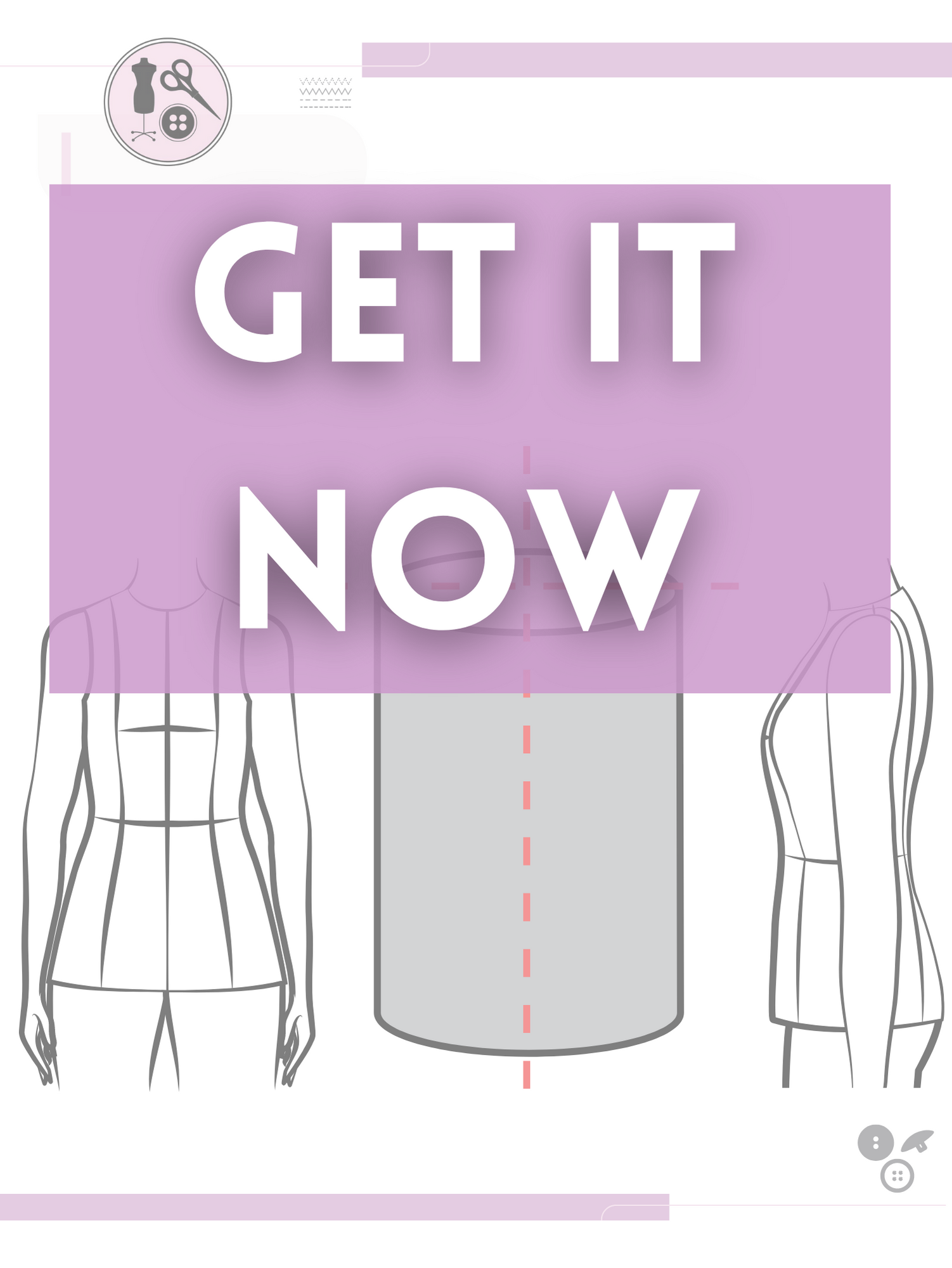
Download Your
FREE Cylinder Diagram
Get a Visual Reference of
How Wearing Ease Works and How it Affects
Ease Distribution and Size Grading.
Send me my Free Wearing Ease Calculator
Wearing Ease Demystified: The Body Cylinder Approach
Let’s look at wearing ease from a fresh perspective!
Wearing ease refers to the extra space beyond the body’s actual measurements. This additional space enables comfortable movement and flexibility while wearing the garment.
Imagine an oval cylinder divided into quarters. Your body is that cylinder, and the garment’s pattern pieces are fitted to it. Consider the cylinder divided into quarters, each representing a section of the body. In our visual, the front body pattern piece rests on the first quarter of the cylinder. This represents just one part of the body, while the remaining pattern pieces complete the picture. To provide a clearer numerical representation, the cylinder’s circumference holds an additional 1 1/2″ (4 cms), of wearing ease. When distributed across quarters, it equates to 3/8″ (1 cm) per quarter.
Applying the cylinder approach, it’s evident that wearing ease should be strategically placed where the body needs room to move. This typically includes the bust, waist, and hips—where you need more range of movement. On the other hand, the shoulders don’t move that much, so they don’t require so much additional space.
This approach isn’t limited to understanding wearing ease. It helps in the grading process as well. Grading involves adding or subtracting from a garment’s size to create variations. Similar to wearing ease, envision each size as a separate tube, each tube fitting into a larger one. This visual helps designers comprehend how sizes relate and how grading impacts various parts of the garment.
To help you understand this approach better, download the FREE Cylinder Diagram. Fill out the form above and get it now!